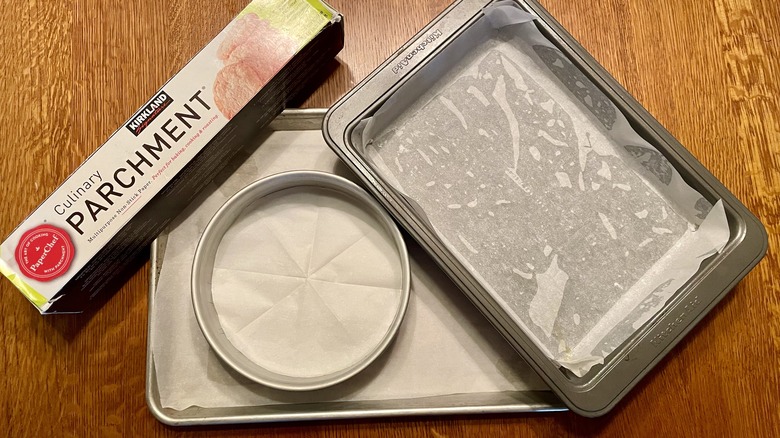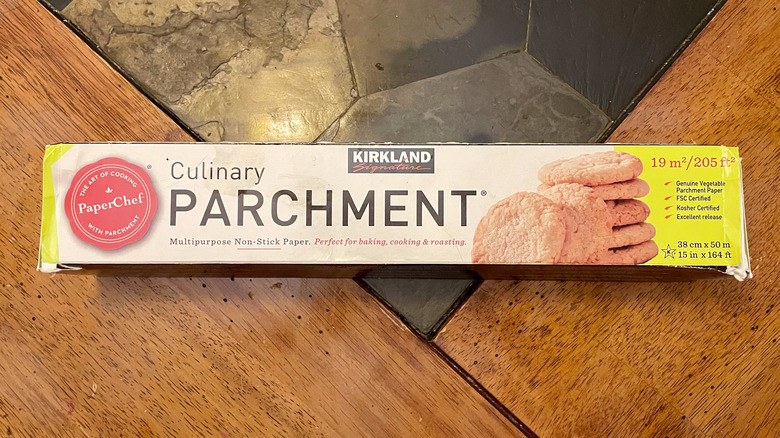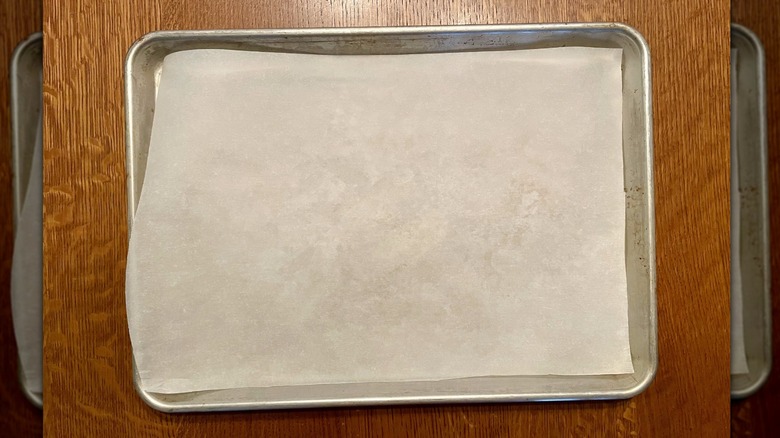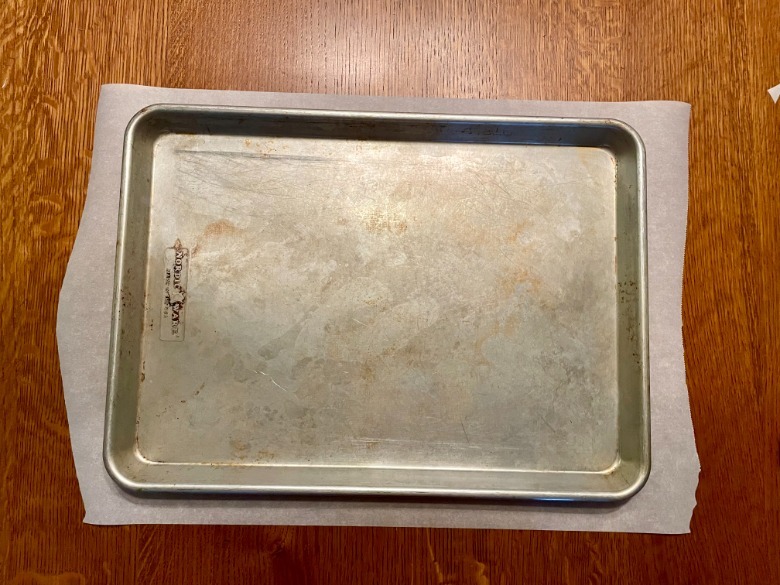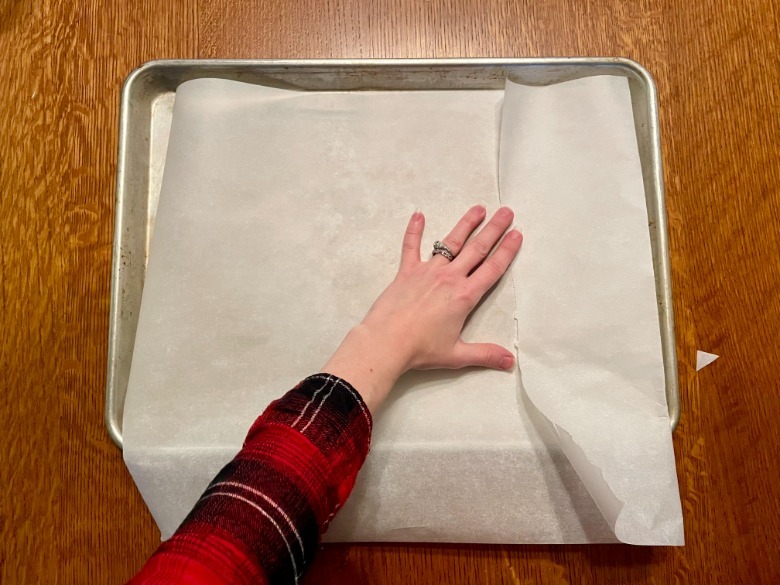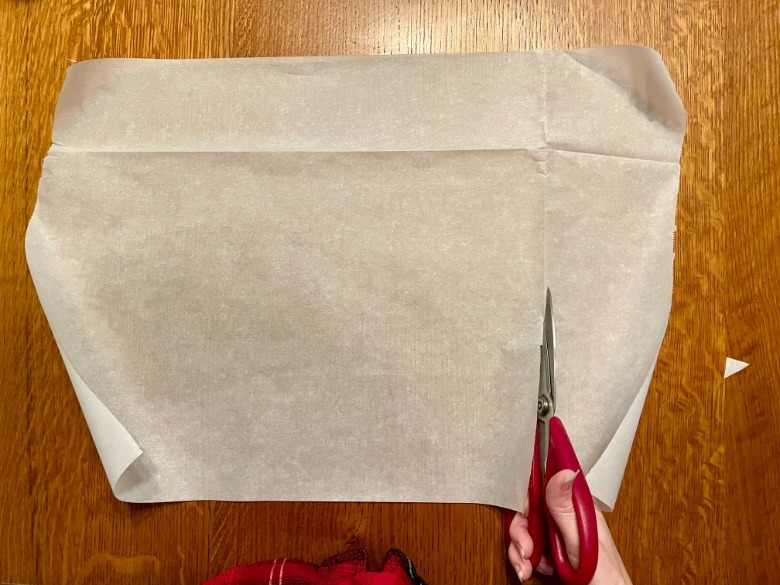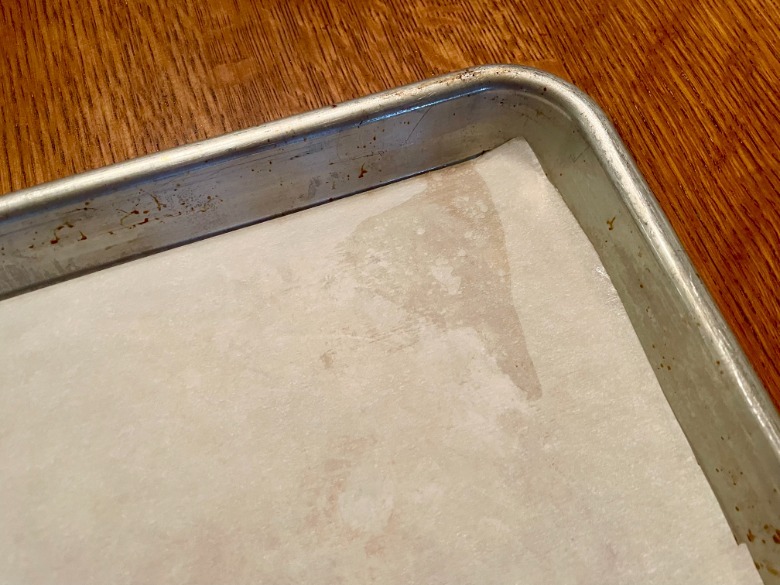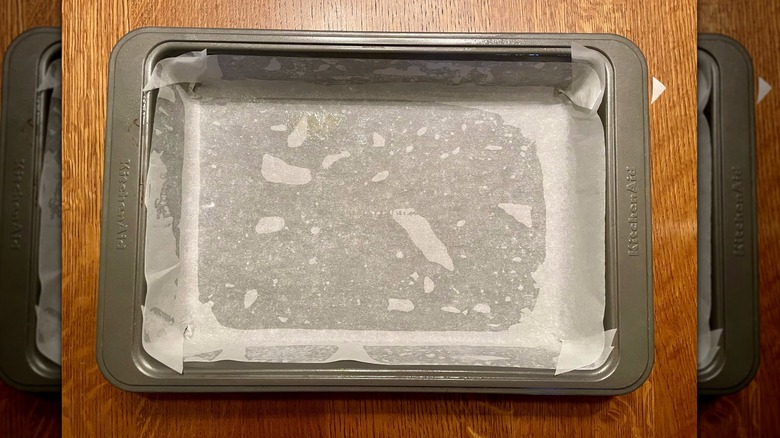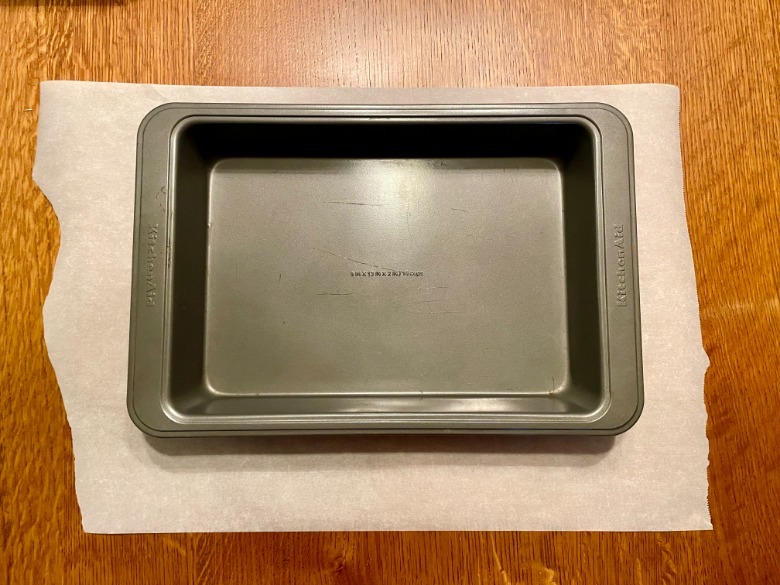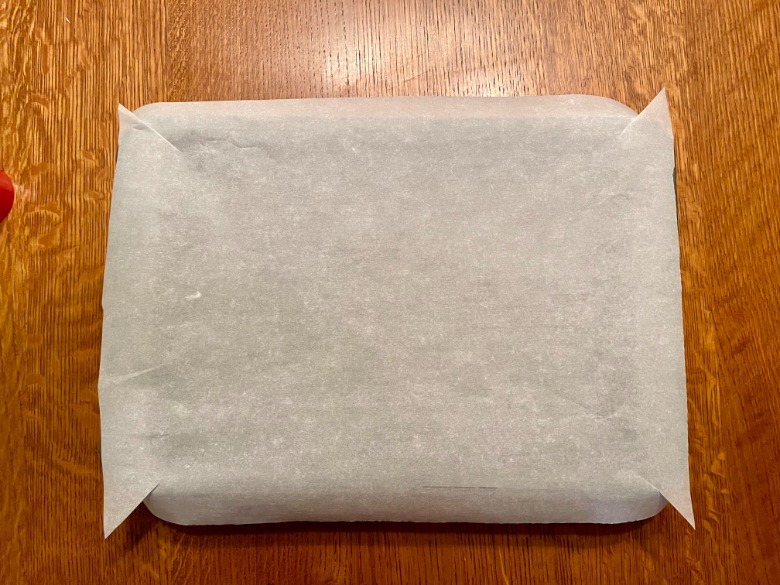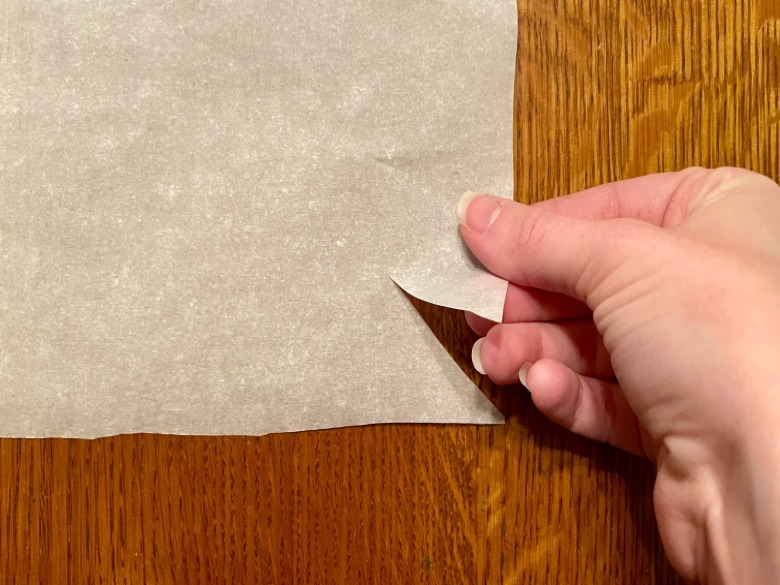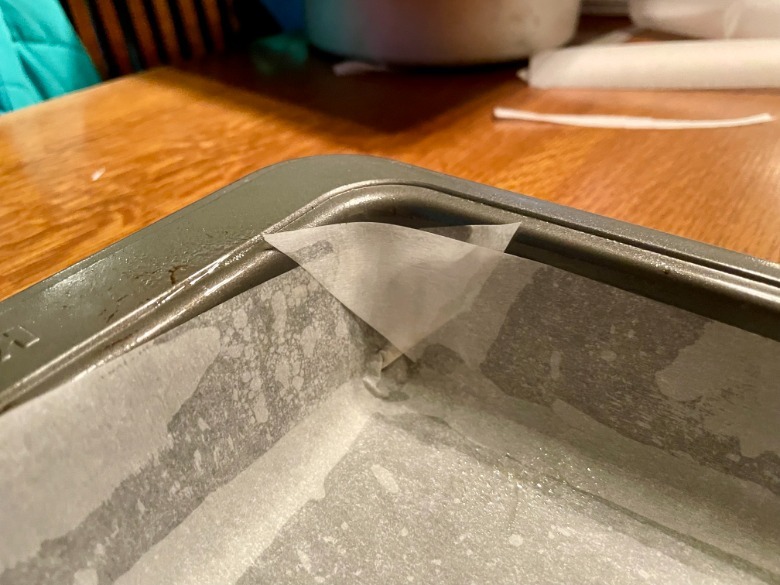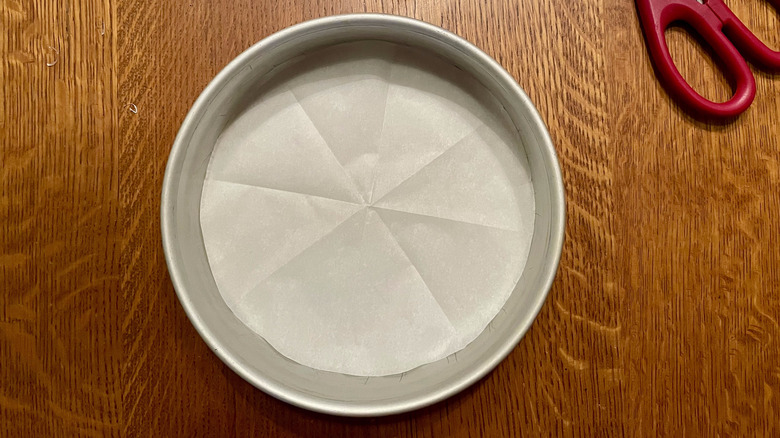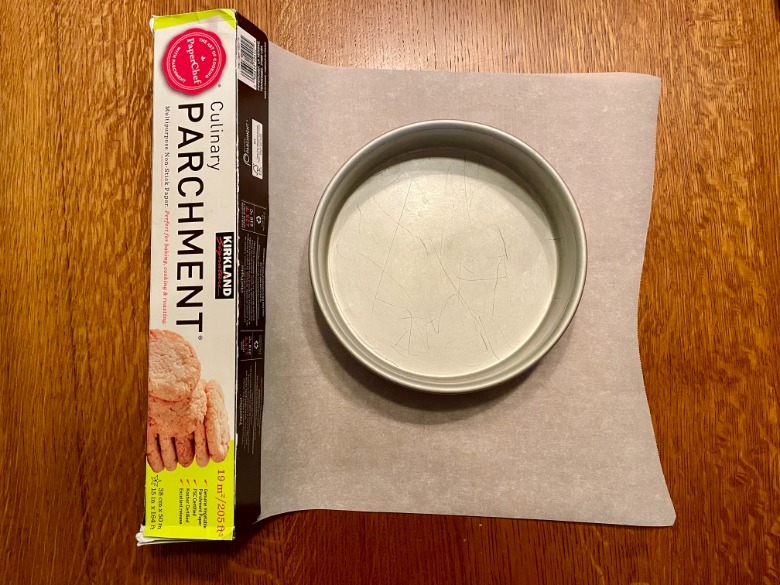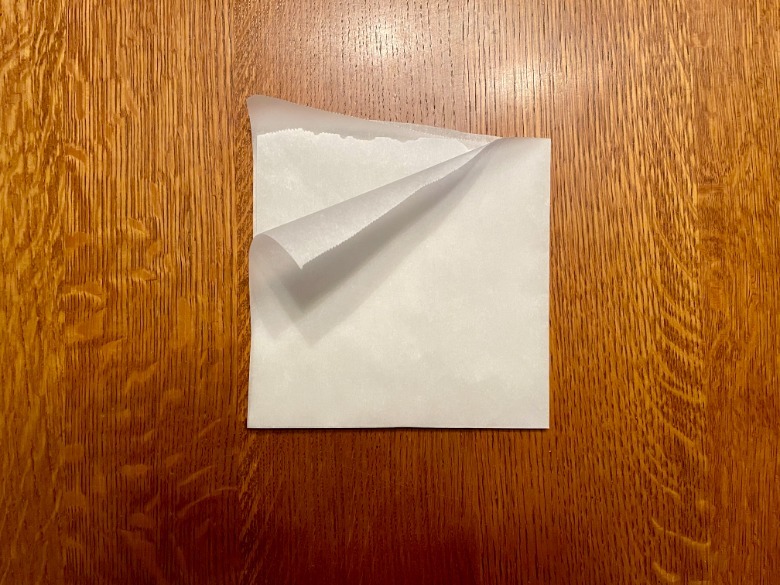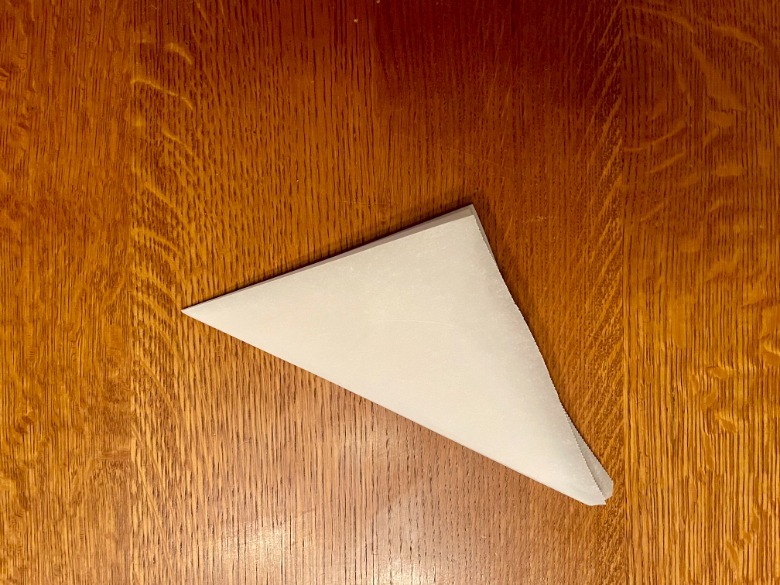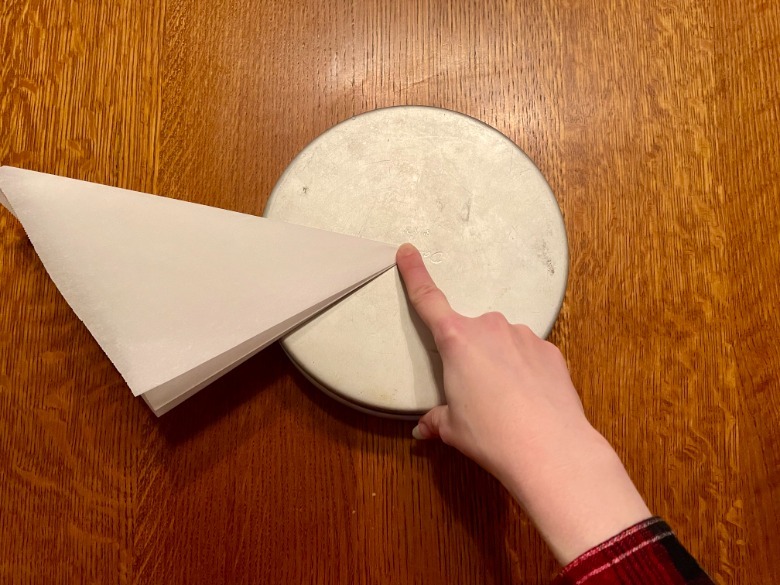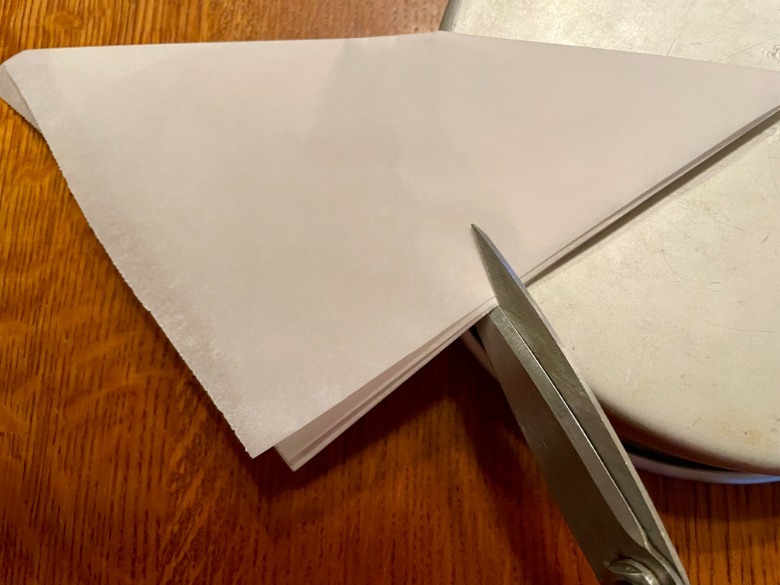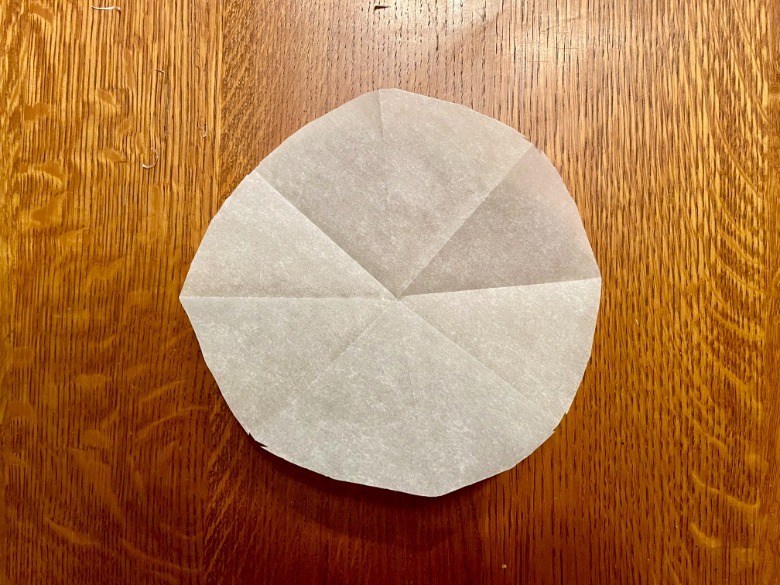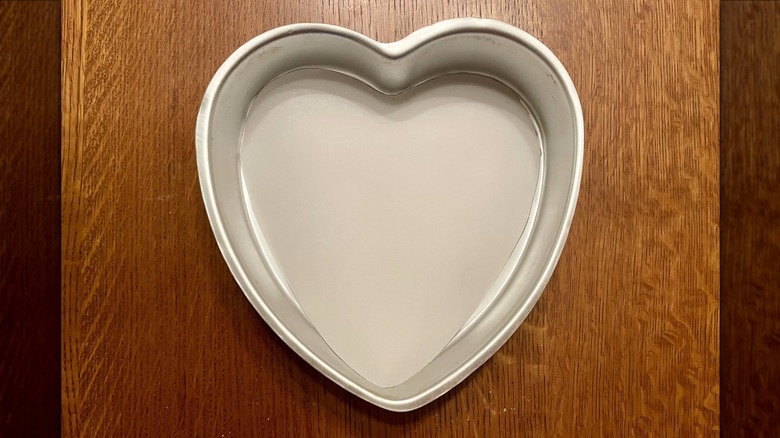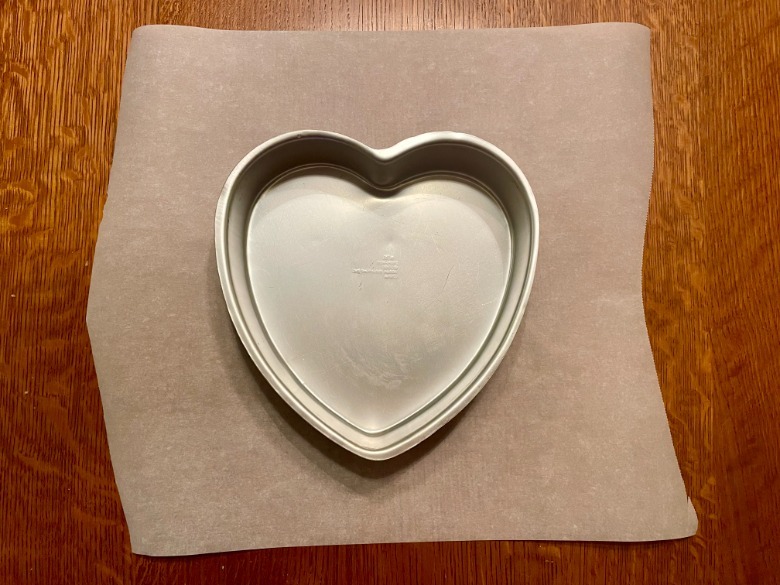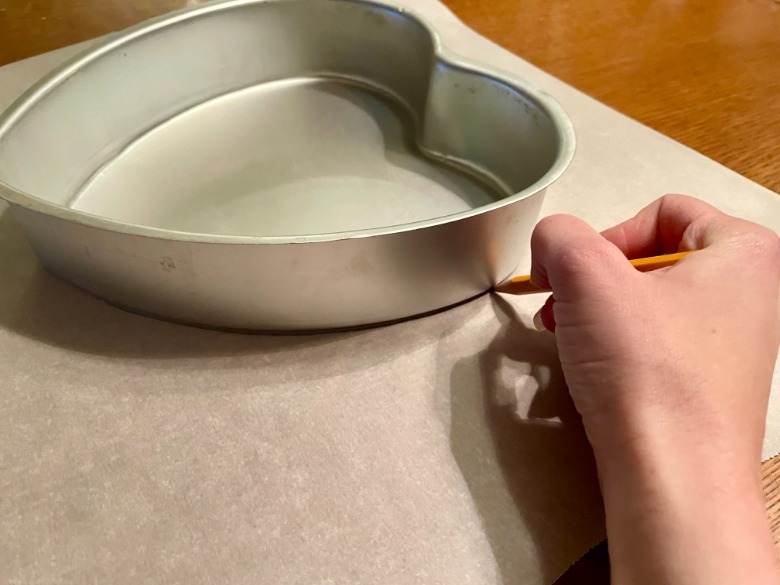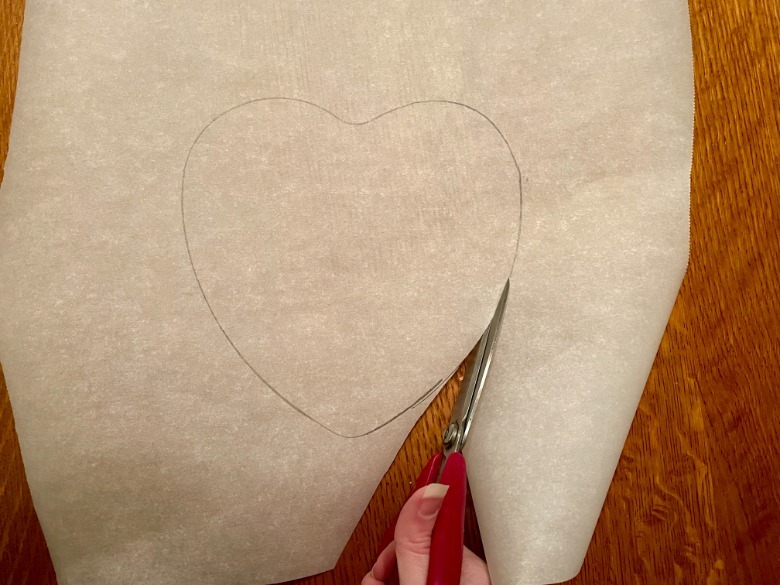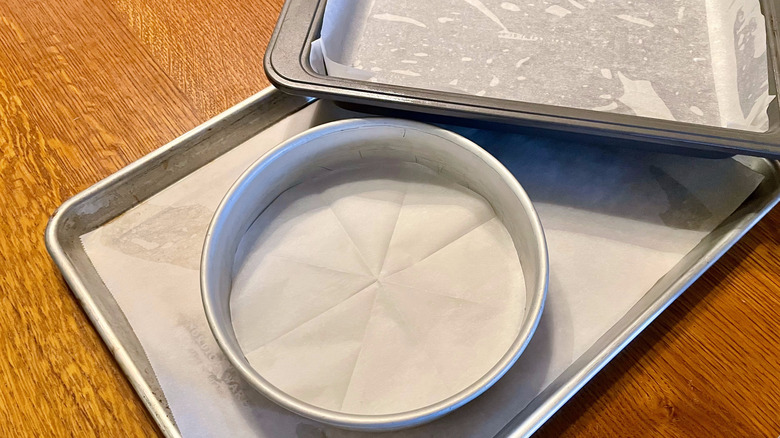How To Line Every Pan With Parchment Paper
Parchment paper is magical. If you have ever struggled with food sticking to your pans, you need to know that parchment paper can make all the difference. Many recipes now even call for lining various pans in parchment paper. Everything from roasting veggies and meat to baking cakes and cookies can benefit from parchment-lined pans.
However, unless you are buying pre-cut pieces of parchment paper, lining pans isn't always easy. For one, parchment paper typically just comes in large sheets, which can be too wide or the wrong shape for whatever pan you need to line. And pre-cut and sized sheets can be pricey, especially if you use several different-sized pans. Luckily, fitting parchment paper into a pan is easy once you know the proper technique and is completely beginner-friendly. All you will need is a roll of parchment paper, some scissors, a pencil, and some cooking oil if using, and you will have your pans lined in no time.
What is parchment paper?
Parchment paper is a type of paper made from cotton fiber or wood pulp. It is naturally nonstick and provides a barrier between the food and the pan, which keeps the food from sticking to the pan. While parchment paper can have a coating, it is crucially different from wax paper, which is coated in wax. Wax paper should not be used to line baking pans.
In recent years, silicone mats have also become popular as a way to line baking sheets. However, there are a few problems with them. For one, silicone does not conduct heat well and can prevent baked goods from browning appropriately. Additionally, silicone can be sticky even after cleaning, and while the mats can be reused, they cannot be resized. A person would need a lot of silicone mats to line all the different pan shapes and sizes.
The beauty of parchment paper is that it is affordable and can be used to fit most pans. It makes an excellent barrier for cooking.
Lining a baking sheet
A flat baking sheet is the easiest type of pan to line. To start, you will need your pan, a pair of scissors, and parchment paper. Start by rolling out your parchment paper to a size slightly larger than the pan itself, then cut using the detailed instructions below.
Pick one corner of your baking sheet and line up the length and width of one side of the parchment paper. Fold over any excess parchment paper along the short end of the pan and crease.
Do the same with the long end. Unfold your parchment paper. The parchment paper will now have creased lines the exact size and shape of your pan. Cut along the lines.
To prevent your parchment paper from curling up, spray a little grease in each of the four corners of your pan. Place your cut piece of parchment paper in the pan, pressing down the corners.
Lining a tall pan
Roll out a piece of parchment paper that is longer in both length and width than your pan.
Cut your piece to the shape of your pan, leaving extra width on the parchment paper equal to the height of your pan. For example, if you have a two-inch tall pan, your parchment paper will be two inches bigger in each direction than the bottom of your pan. Do not stress too much; these measurements do not have to be precise.
From there, take your pair of scissors, and from each corner, cut a diagonal line towards the center of your paper. The line will be as long as your pan is high.
Place your parchment in your pan and press down. The corners will create two triangles. Layer one on top of the other to create a flush corner.
Once you have confirmed the piece fits, remove the parchment and grease your pan to ensure your parchment paper sticks.
Lining a round pan
Cut a square piece of parchment paper that is larger than your circle.
Fold your square piece of parchment in half to create a rectangle. Then, fold it again to create another square.
Finally, fold the two corners together to create a triangle.
Place the pointed end of the triangle where all the folds meet in the center of your overturned round pan so that the edge of the paper extends over the edge of the pan.
Take a pair of scissors and cut the paper along the edge of the pan.
Discard excess parchment paper. Unfold your triangle to form a circle. Place the circle in your pan. If you find the circle is too large, fold it back up and trim the edge until the desired size is reached. Grease the pan to ensure the parchment sticks and does not roll up.
Lining an awkwardly-shaped pan
If you have an awkwardly-shaped pan, such as a heart, cut a piece of parchment paper larger than the pan itself. Place the pan onto your cut piece.
Holding the pan firmly with one hand, pick up a pencil with the other, and trace an outline of the pan onto the parchment paper.
Then, use your scissors to cut along the stencil.
Spray the pan with grease, and press parchment paper into the bottom of the pan.
Put parchment paper to work with these recipes
Many recipes can benefit from lining your pans with parchment paper. Chocolate macarons are delicate and may not come off cleanly without a parchment lining. Parchment paper can also make cleanup a breeze for baked mac and cheese. And unlike silicone mats, parchment paper will not interfere with the crisping of roasted potatoes.
